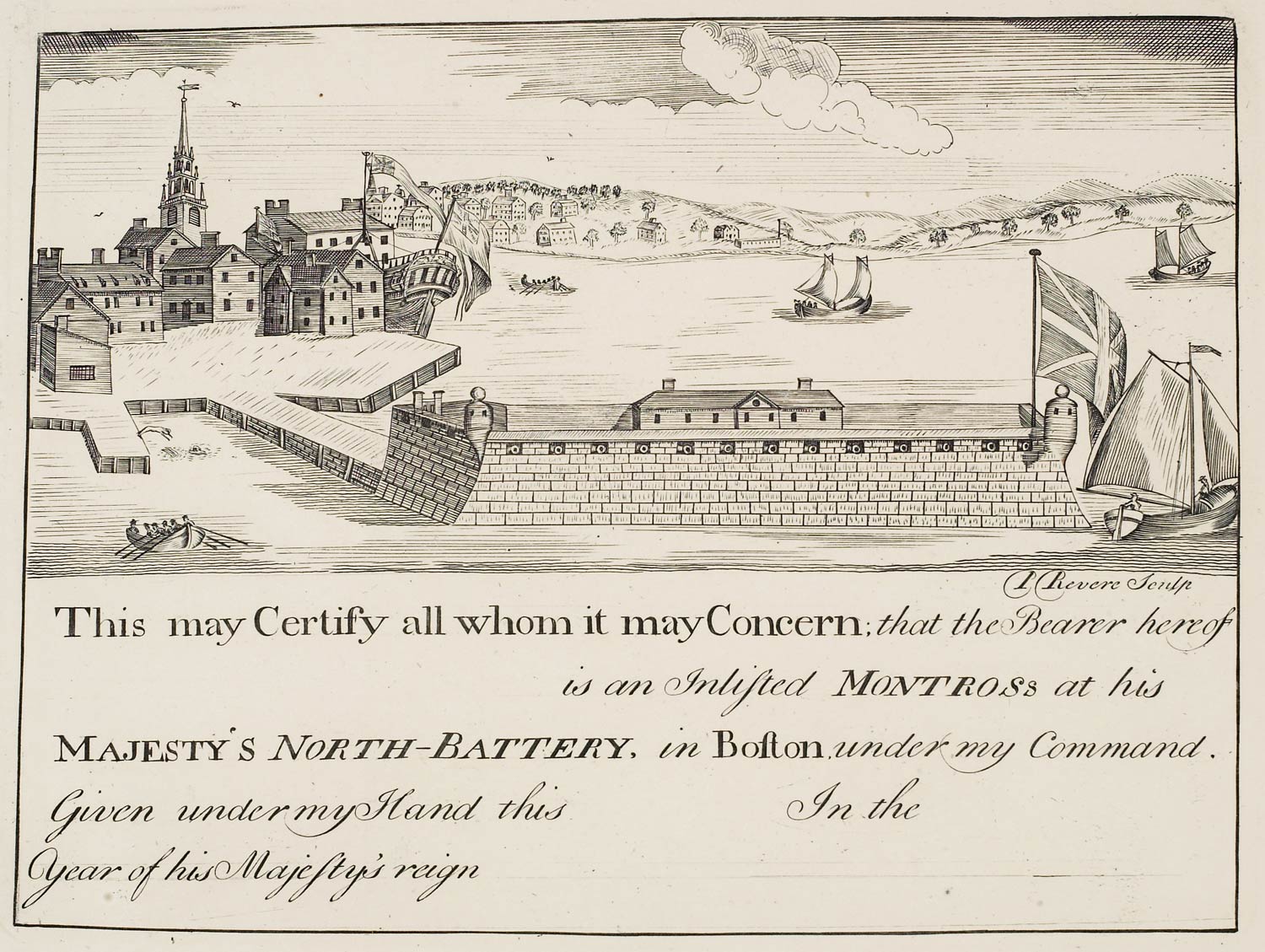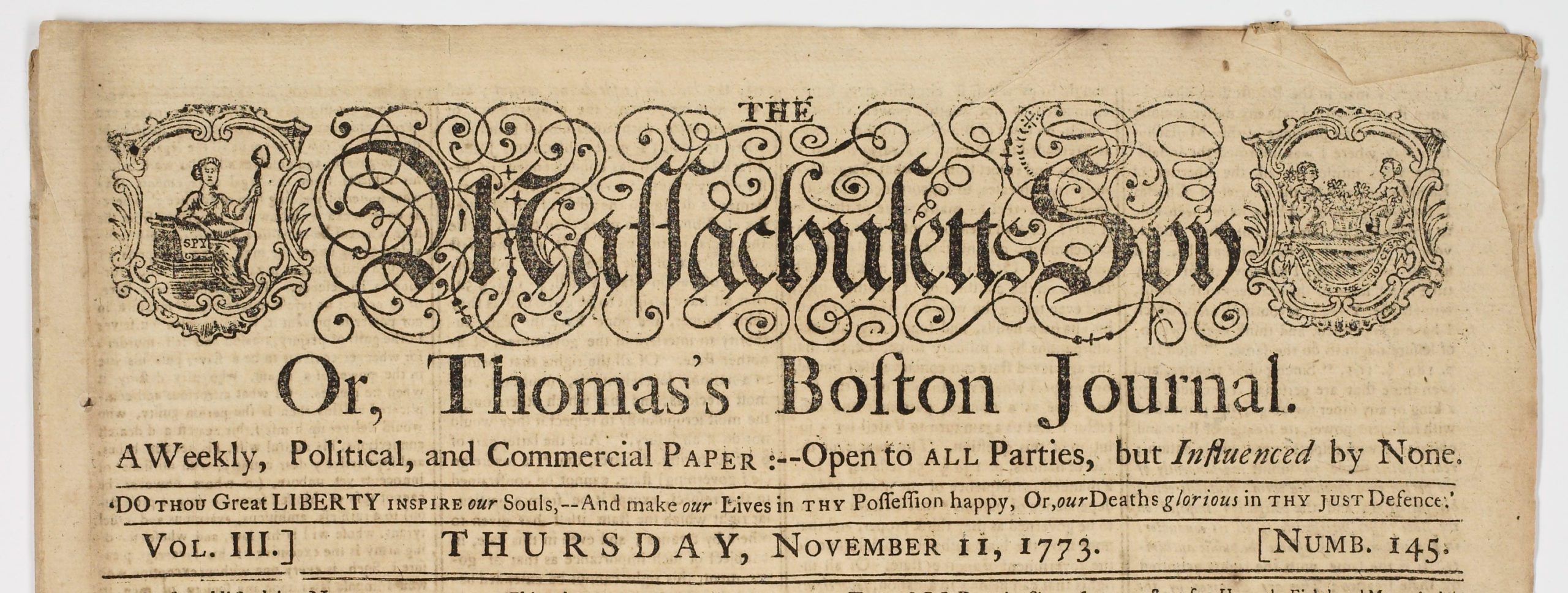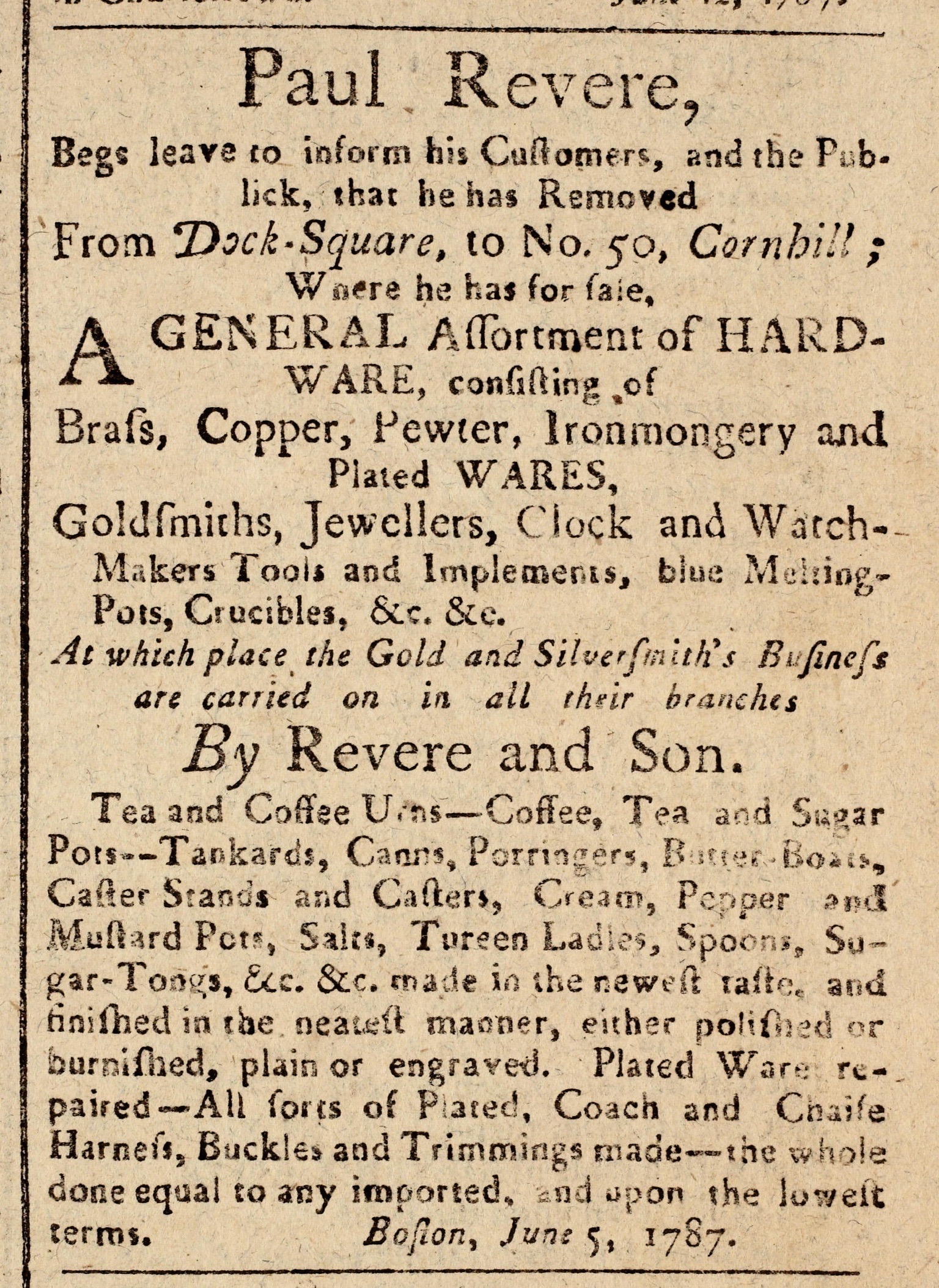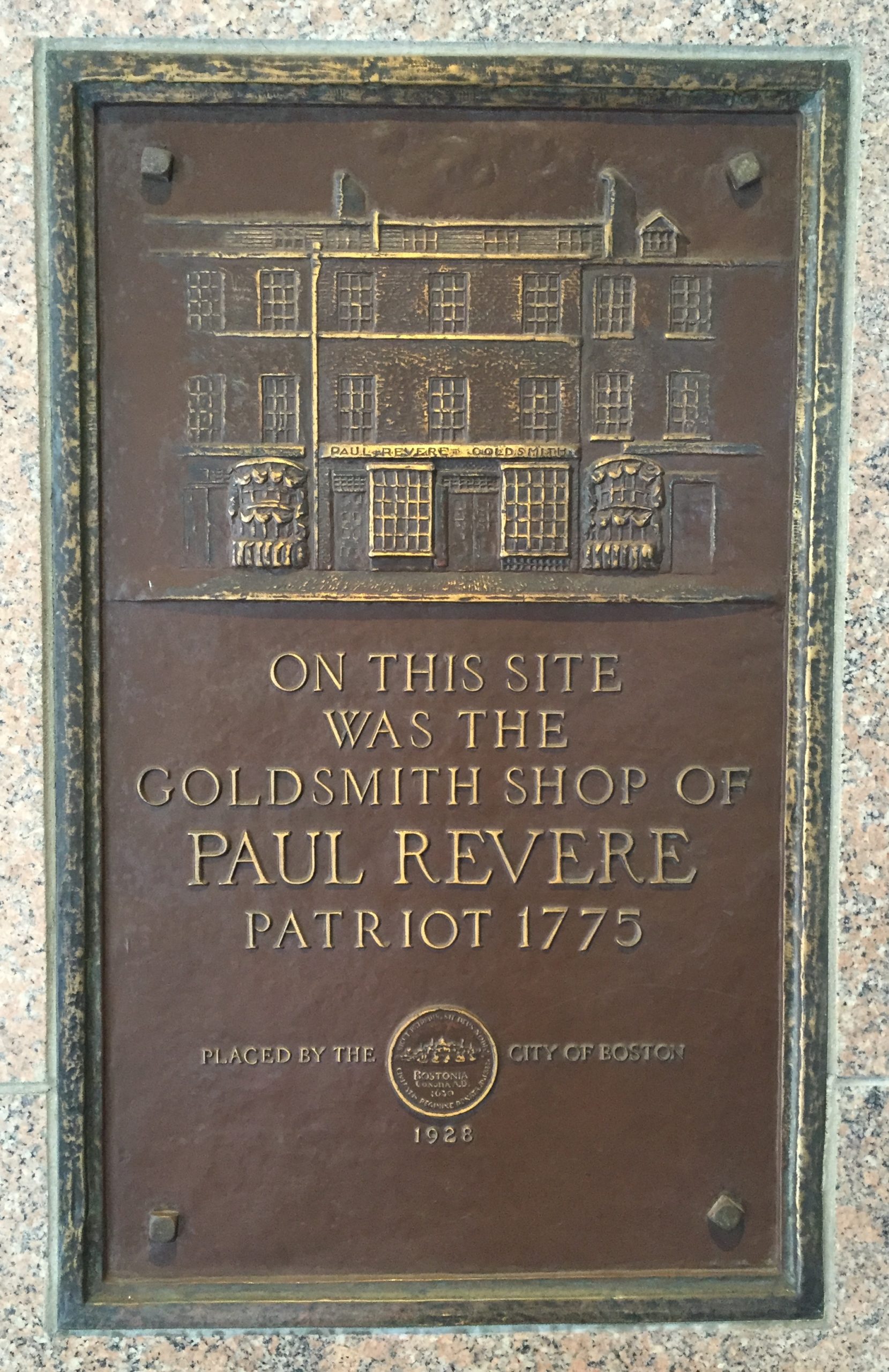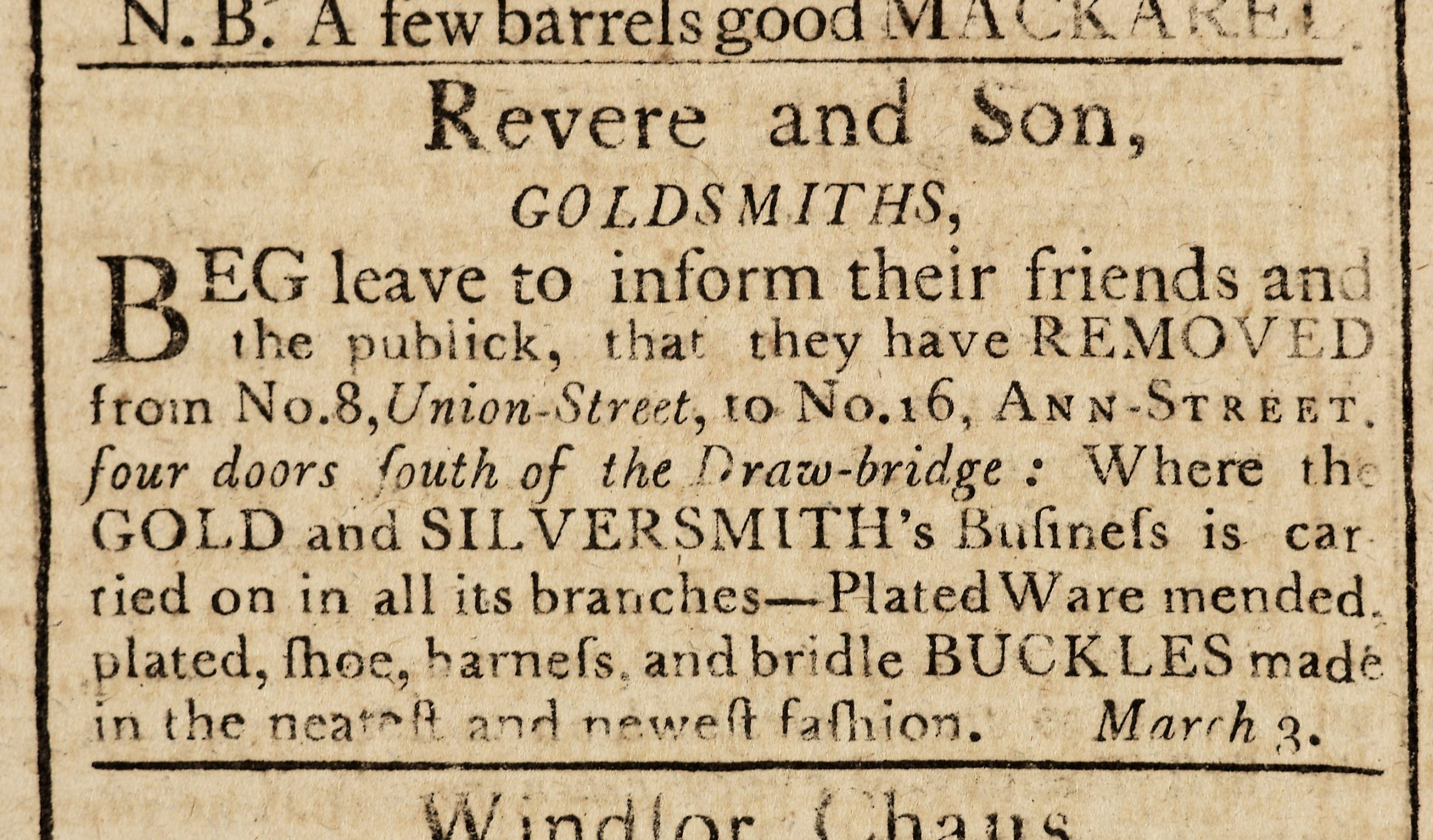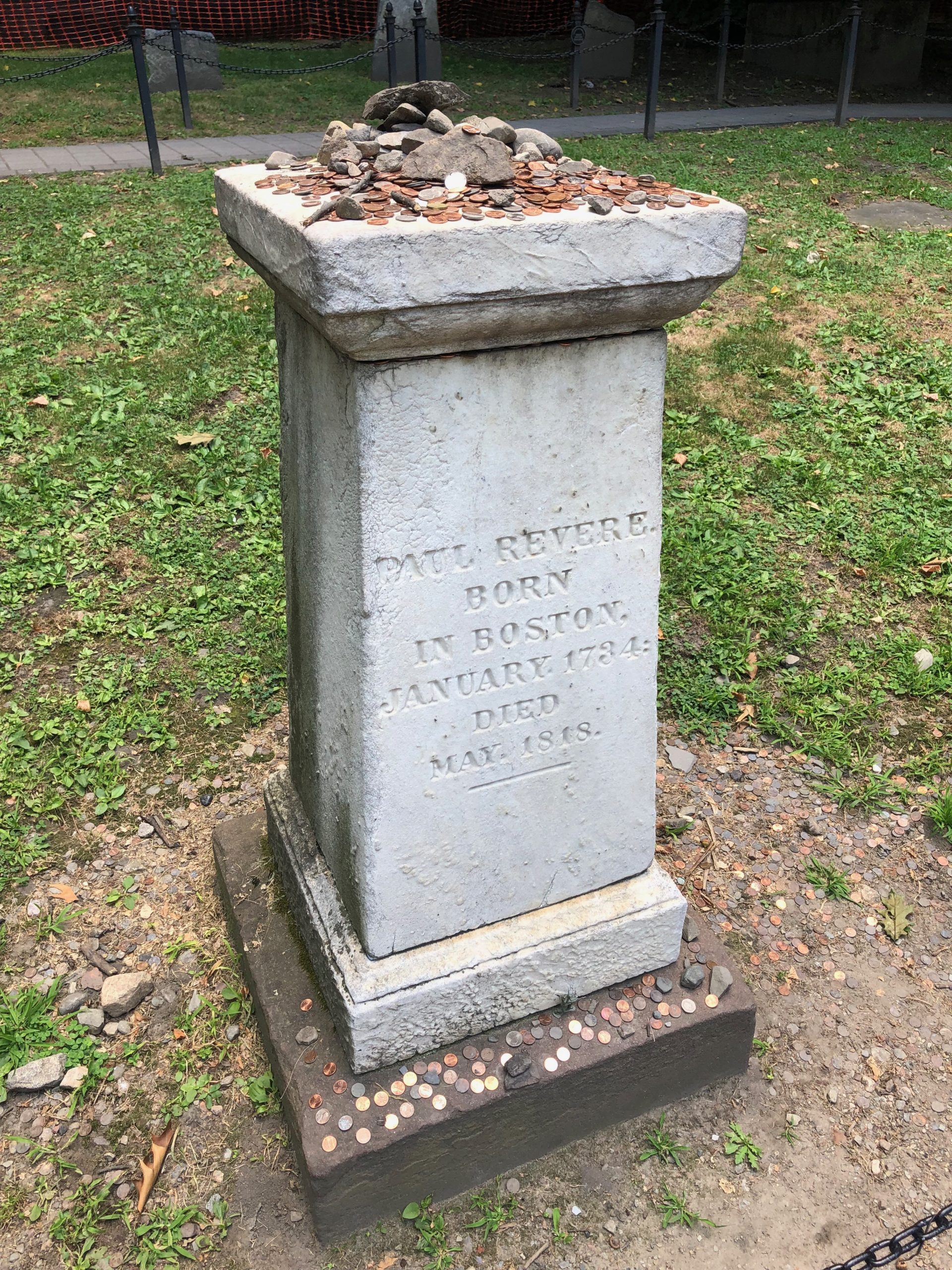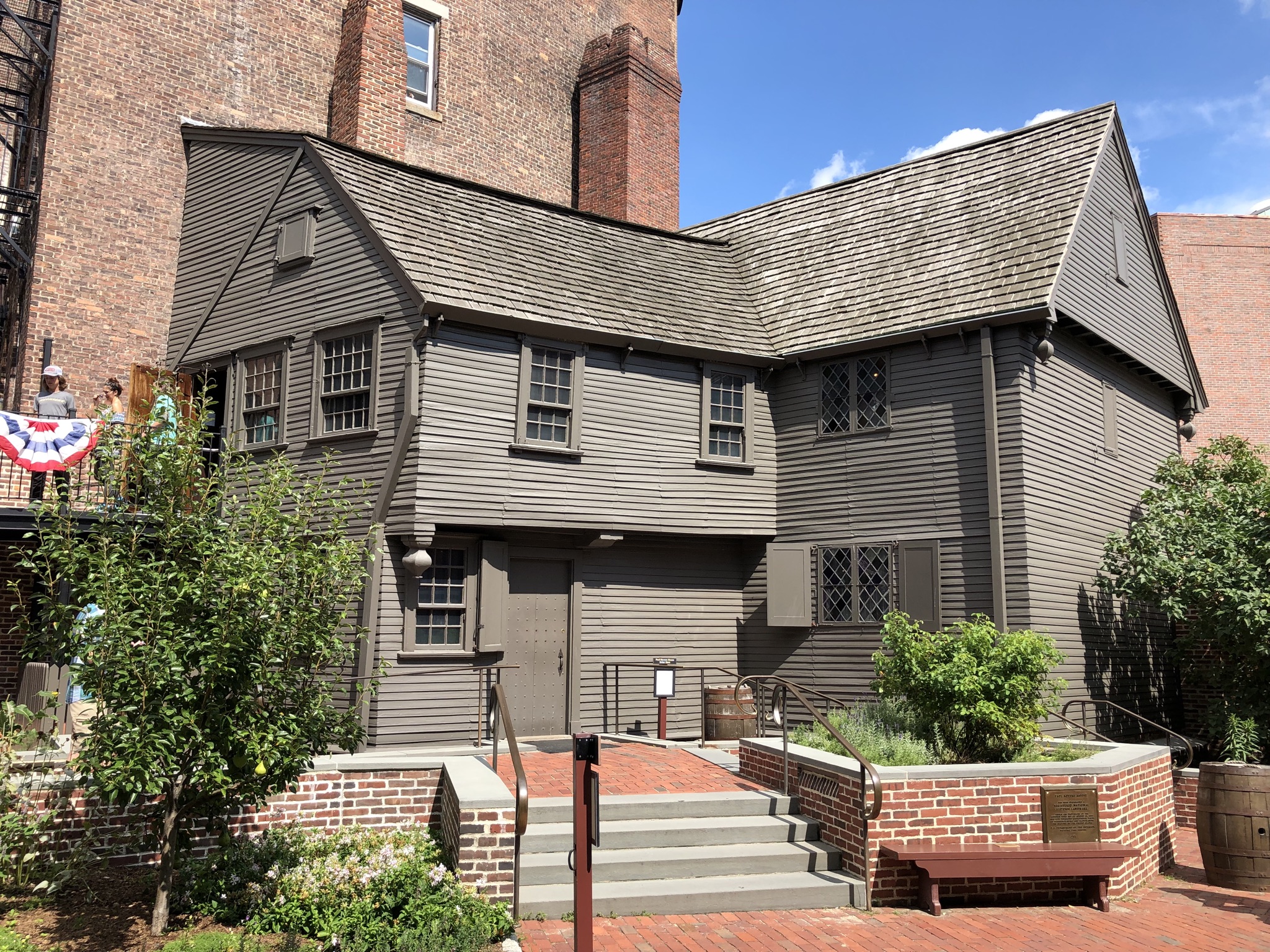Paul Revere
The Life of a Patriot
A Man of Many Trades
Paul Revere by Copley, 1768
Paul Revere was born in the North End of Boston on December 21, 1734. He was educated at the North Writing School and at the age of 13 began working as an apprentice at his father’s gold and silversmith shop. The elder Revere was also named Paul Revere (originally Apollos Rivoire) and his shop was located on Fish Street at the head of Clark’s Wharf. In 1750, when Paul was 15, he and 6 friends were paid to ring the bells at Christ Church, known today at the Old North Church. In 1754, a 19-year-old Revere was in the midst of a seven-year apprenticeship as a silversmith when his father died. At that time, Paul’s widowed mother Deborah Revere may have become proprietor of the family business and supervised the financial end of the operation where Paul, his brother Thomas, and others worked. When Paul reached the age of 21, he was old enough to take over the business himself.
Revere’s North Battery Certificate
As a copper plate engraver, one of Paul Revere’s first efforts was the North Battery certificate produced about 1762. Shown above is a restrike made in 1882 from his original plate. Later copper plate prints include the well-known engraving of the Boston Massacre; the Landing of the Troops—an engraving showing the British troops landing at Long Wharf in 1768; and engraving work for Massachusetts currency, books, and magazines. After nearly 16 years of marriage, Paul’s wife Sarah died in May of 1773. In October of that year, Revere married Rachel Walker. Together, they also had eight children. Paul Revere was the father of 16!
Revere also did lead metal engravings for newspapers including the mastheads of both the Boston Gazette and the Massachusetts Spy shown below. The events of his midnight ride are covered in the “April 18-19, 1775” section. When the Revolutionary War broke out, Paul Revere learned how to manufacture gunpowder from the owner of a powder factory in Philadelphia. He returned to Boston and oversaw the construction of a powder mill in Canton that would supply gunpowder for the newly formed Continental Army.
Massachusetts Spy masthead
Revere spent most of the American Revolution as lieutenant colonel in the Massachusetts State Train of Artillery and commander of Castle Island in Boston Harbor. Newspaper ads placed by Paul Revere after the Revolution tell us that he moved his silversmith shop multiple times; operated a hardware store as early as 1783; and housed both businesses together in 1787 as the original ad shown below from the June 13, 1787 issue of the Massachusetts Centinel notes. Beneath that ad is a photo of a plaque you can see today marking the location of Revere’s shop in 1787—No. 50 Cornhill at the time. The final ad from the March 10, 1790 issue of the Massachusetts Centinel tells us that Revere had moved his gold and silversmith shop to No. 8 Union Street by that time and was again relocating to No. 16 Ann Street.
Revere ad from March 10, 1790
By 1788, while still operating his silversmith shop (run on a day-to-day basis by his son Paul Jr.) and hardware store, Revere opened a foundry and produced bolts, spikes, and nails for local shipyards. After 1792, he began to cast bells at his foundry in the North End of Boston, and was assisted by his sons Paul Revere Jr. and Joseph Warren Revere. Today some 148 bells made at the Revere Foundry still survive. Most are located in New England. In 1794, Revere began casting cannon (naval and field pieces) for the federal government and various state governments.
Revere died on May 10, 1818 at the age of 83. The notice of his death in the Columbian Centinel included these words: “During his protracted life, his activity in business and benevolence, the vigor of his mind, and strength of his constitution were unabated.” He is buried in Boston’s Granary Burying Ground. Paul Revere was not born to wealth—he was an ordinary man who lived an extraordinary life. Revere was a patriot, a businessman, an involved citizen, and a popular and well-respected member of his community.
Revere’s marker in Granary
Today, the staff at the Paul Revere House is dedicated to preserving Paul Revere’s memory and his place in American history for future generations. Because of their work, the intriguing story of Paul Revere’s Boston is alive and well at the patriot’s former home at 19 North Square. Visit the Paul Revere House and learn more about his work as an artisan, his political and civic connections, and many messenger rides including the one that would make Paul Revere famous thanks to a poem by Henry Wadsworth Longfellow. You can see samples of his silverwork on display and also view a 931-pound bell produced at the Revere Foundry in 1804.
The Paul Revere House in Boston


